Explanation about Shogi
Shogi is a Japanese board game similar to chess, also known as Japanese Chess.
Unlike chess, one distinctive feature of shogi is that captured enemy pieces can be brought back into play as one's own pieces.
How to play shogi
At the start of the game, arrange the pieces as shown in the figure below.
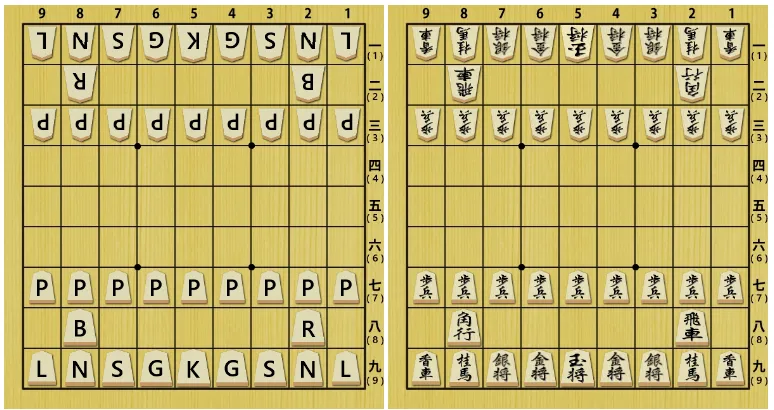
3 ranks from the edge of the other side is called the enemy area, and 3 ranks from the edge of your side is called your own area.
Letters are also written on the back of the pieces of Pawn, Lance, Knight, Silver, Bishop, and Rook.
When you move these pieces to or from the enemy on the board, you can flip them over and promote them.
You can use the enemy piece you took as a holding piece, but even if you take the enemy piece after promotion, you must drop it in the state before promotion.
Players move their pieces one by one to attack the enemy.
In the end, the one who is ready to take the enemy's King no matter what the opponent responds to, that is, the checkmate wins.
Types of pieces and how to move
Pawn (P)
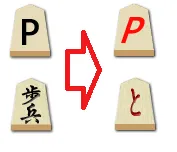
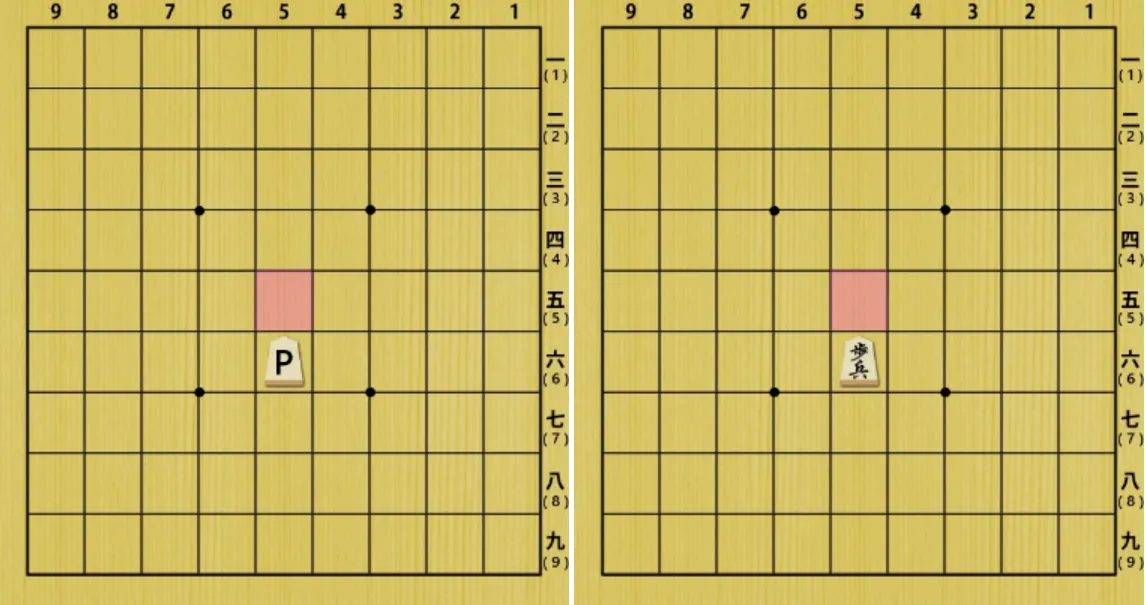
Pawn can only go one square in front.
When Pawn is promoted, it becomes a piece that behaves like Gold.
Not limited to Pawn, pieces do not have to be promoted at the timing when they can be promoted, but if they cannot be moved without being promoted, they must be promoted. For example, when Pawn has reached the edge of the enemy line.
Also, you cannot place your own pieces in such places.
When you drop a step of your own piece, you can not drop it in the File that already has your Pawn, and if you drop it, you will lose the foul. It is also a foul to drop Pawn and checkmate. However, it's okay to move Pawn and checkmate.
Lance (L)
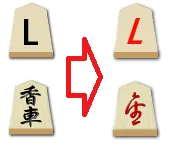
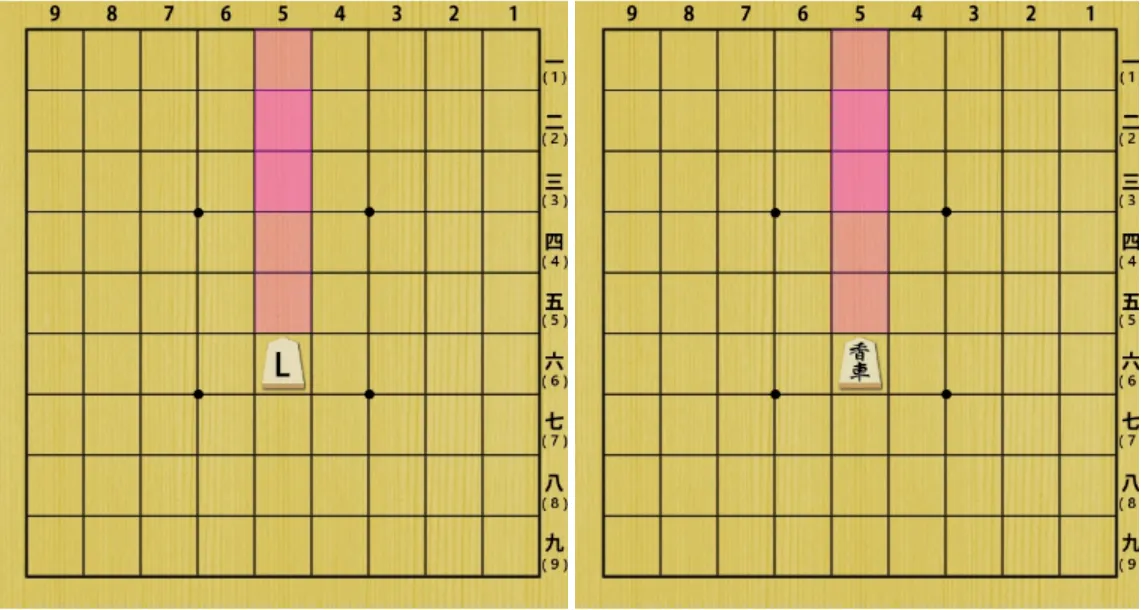
Lance can go straight forward until it hits another piece.
When Lance is promoted, it becomes a piece that moves in the same way as Gold.
Knight (N)
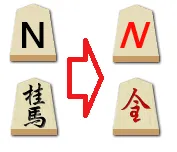
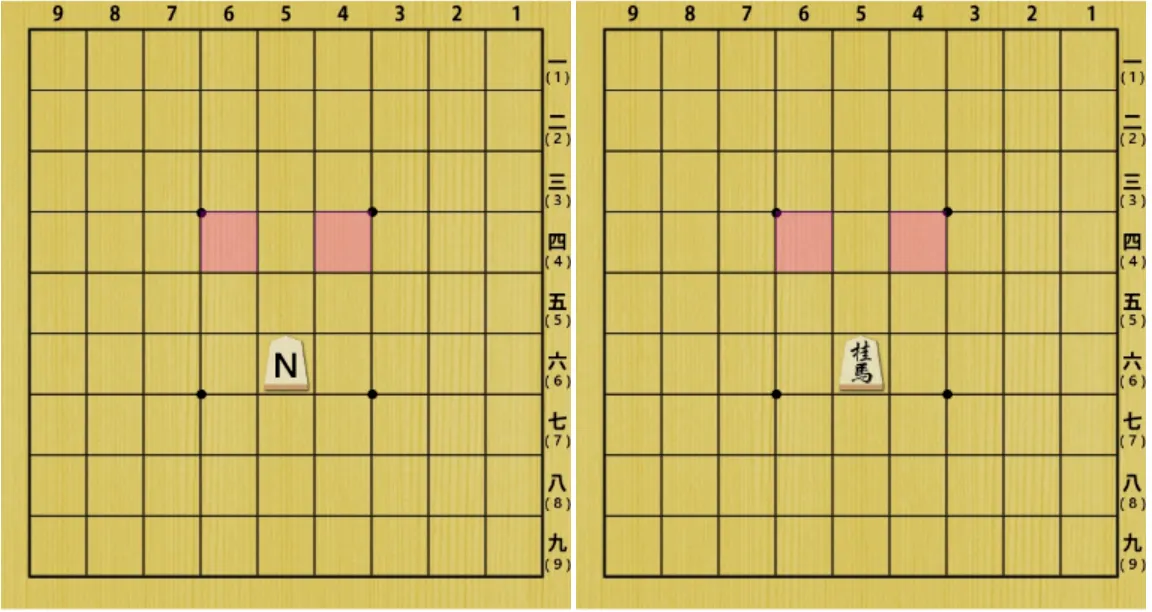
Knight can jump over other pieces and move to two places on the left and right of the square that has advanced two squares forward.
When Knight is promoted, it becomes a piece that moves in the same way as Gold.
Silver (S)
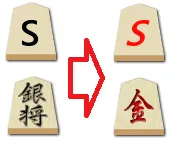
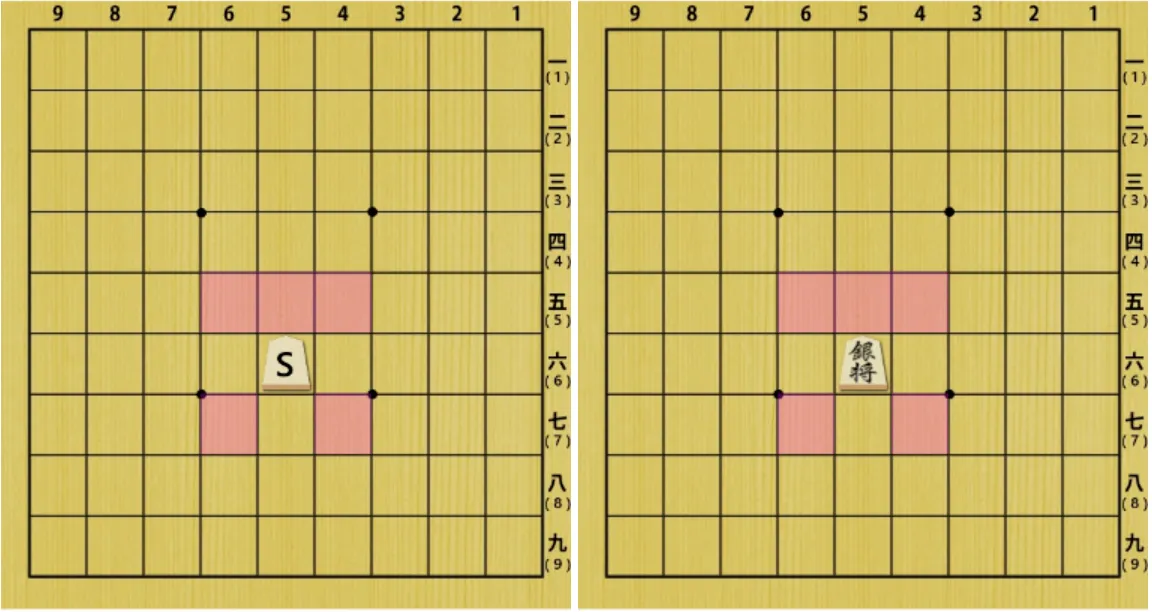
Silver can move to 5 squares: front left, front, front right, rear left, and rear right.
When Silver is promoted, it becomes a piece that moves in the same way as Gold.
Gold (G)
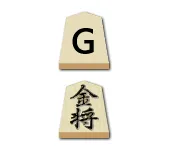
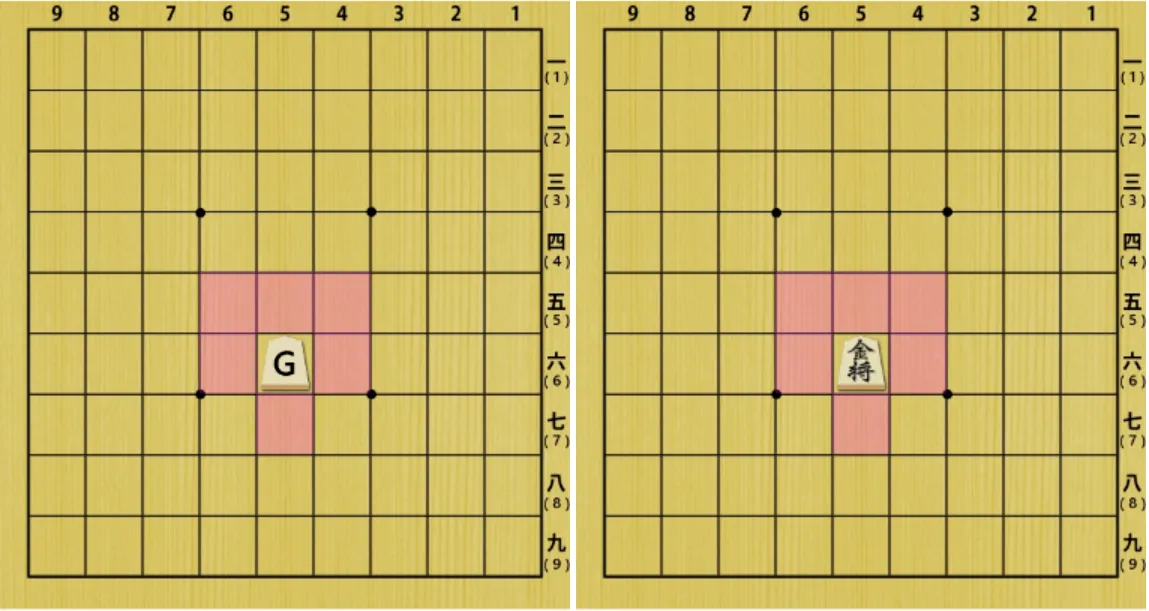
Gold can move to 6 squares around itself, excluding the left rear and the right rear.
Gold cannot be promoted.
Bishop (B)
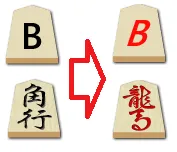
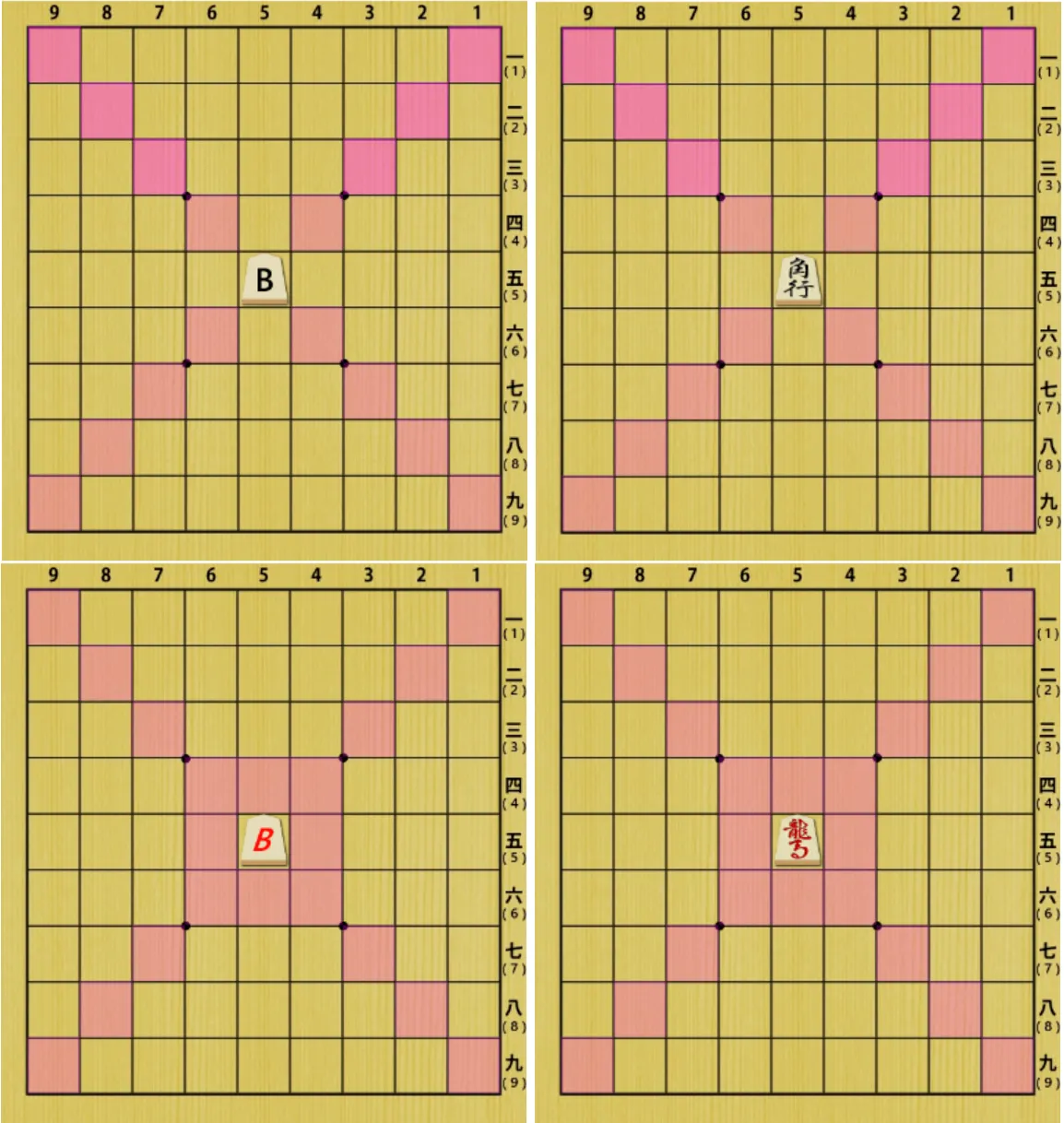
Bishop can go straight in four diagonal directions.
The promoted Bishop will be able to move to one square in front, back, left and right in addition to the original movement.
Rook (R)
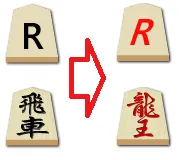
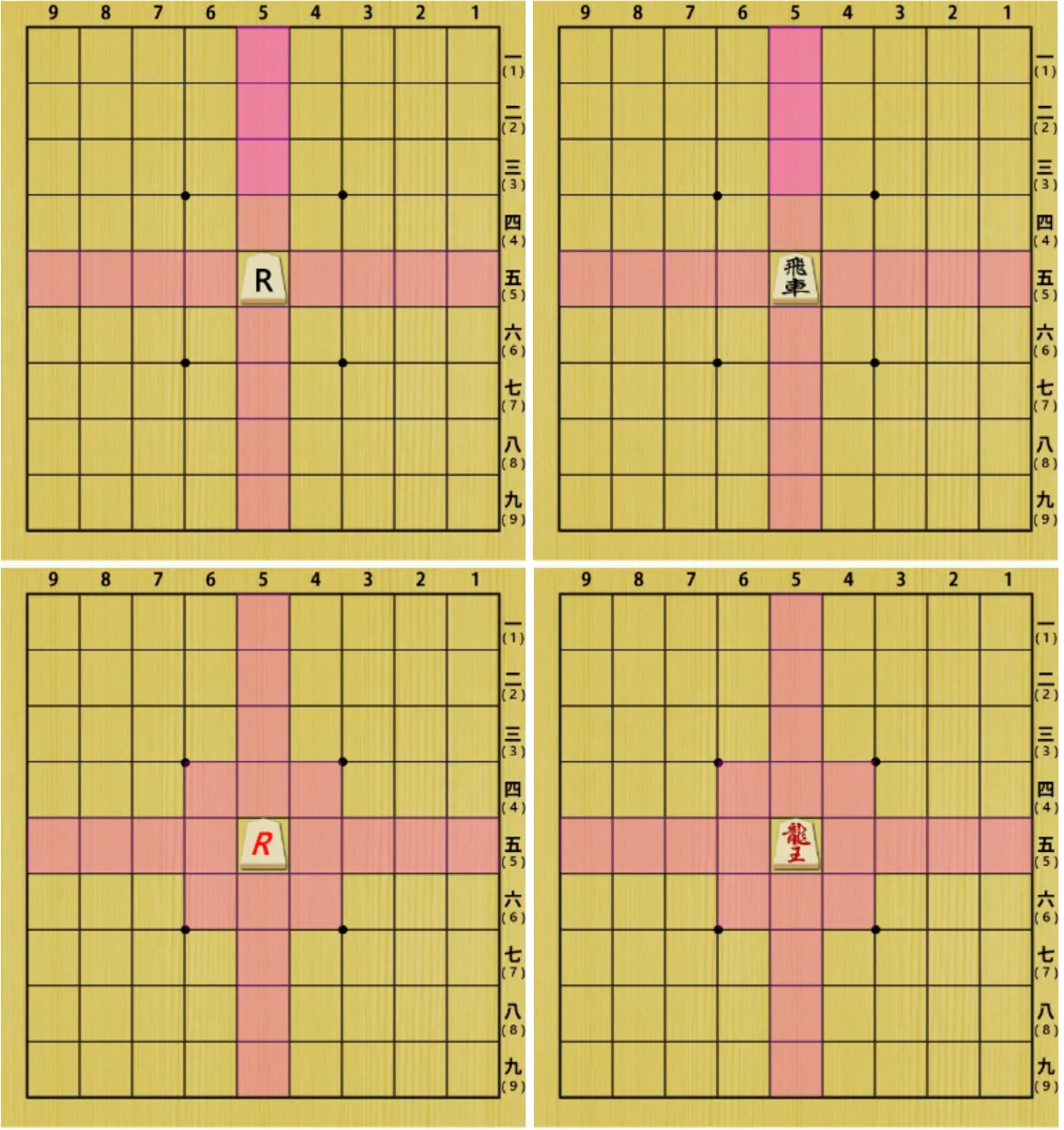
Rook can go straight in four directions, front, back, left and right.
When Rook is promoted, it will be possible to move one square diagonally in addition to the original movement.
King (K)
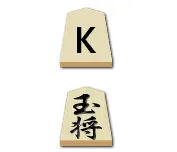
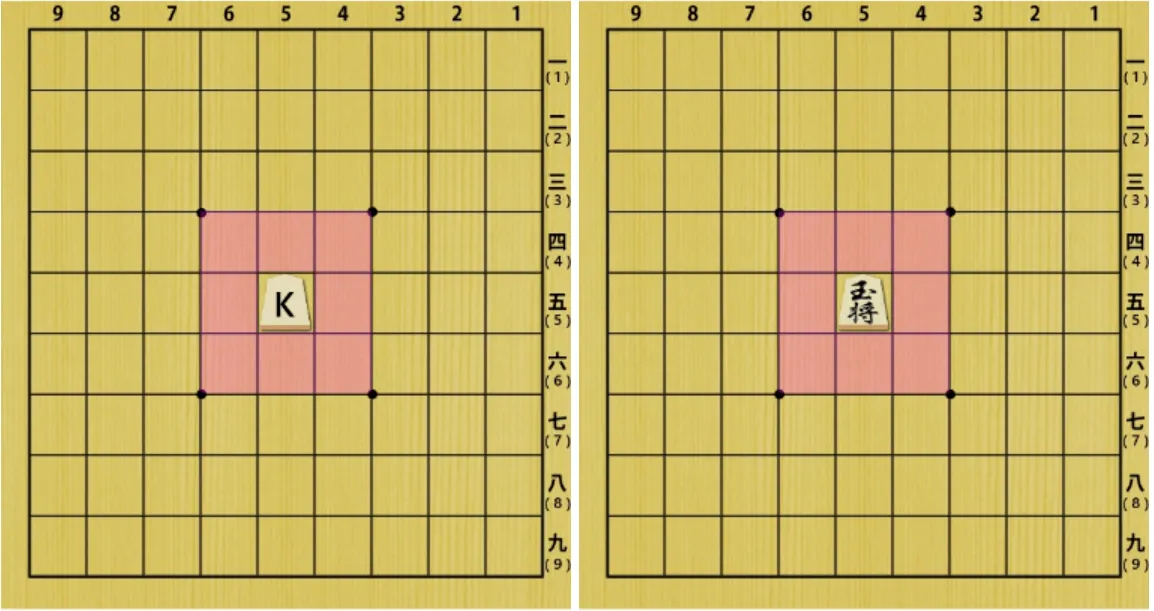
King can move to eight places in one square around him.
It is important to fight while protecting your own King and attack the enemy King well.
Example of checkmate
In the figure below, if you drop Gold on Square at 5,2 (5th file, 2nd rank), the enemy King will not be able to move and you will win.
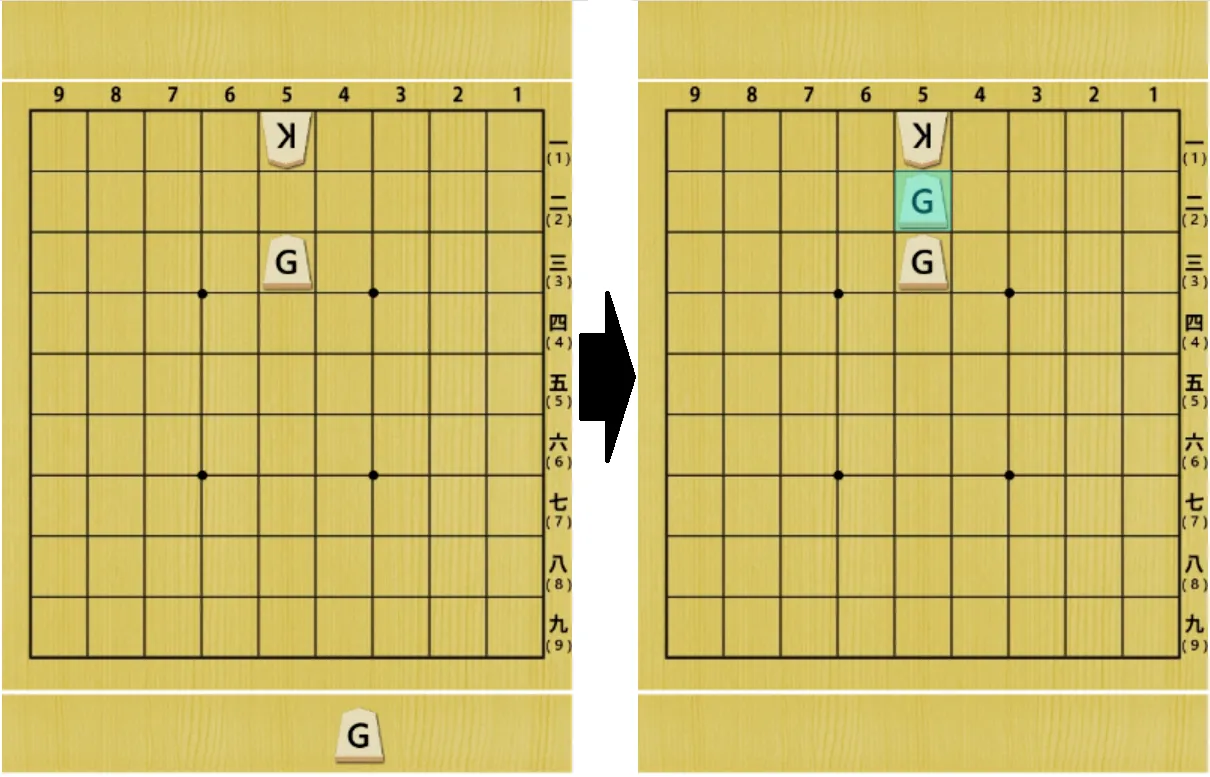
Anecdote about the difference between chess and shogi
There was a very strong and famous Shogi player named Kozo Masuda.
After World War II, GHQ summoned him and asked:
Unlike chess, shogi incorporates the captured enemy pieces into its own army. This is an abuse of prisoners of war and inhumane, isn't it?
Mr. Masuda responded to this inquiry as follows.
In chess, you don't use the pieces you took, but that would be considered as mistreatment of prisoners of war. Shogi does not abuse or mistreat prisoners of war. The idea is that even when human resources move from the enemy to the ally, we respect their abilities and provide them with a place to work in their original positions.
It is said that thanks to Brigadier General Whitney's conviction in what Mr. Masuda said, the culture of shogi has been passed down without interruption after the war.